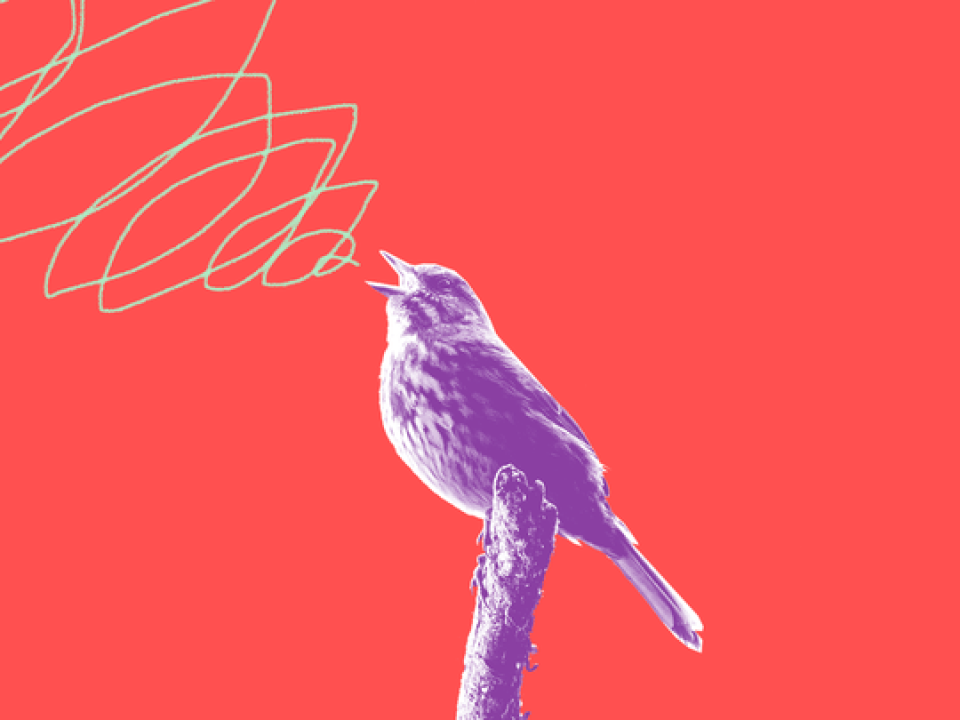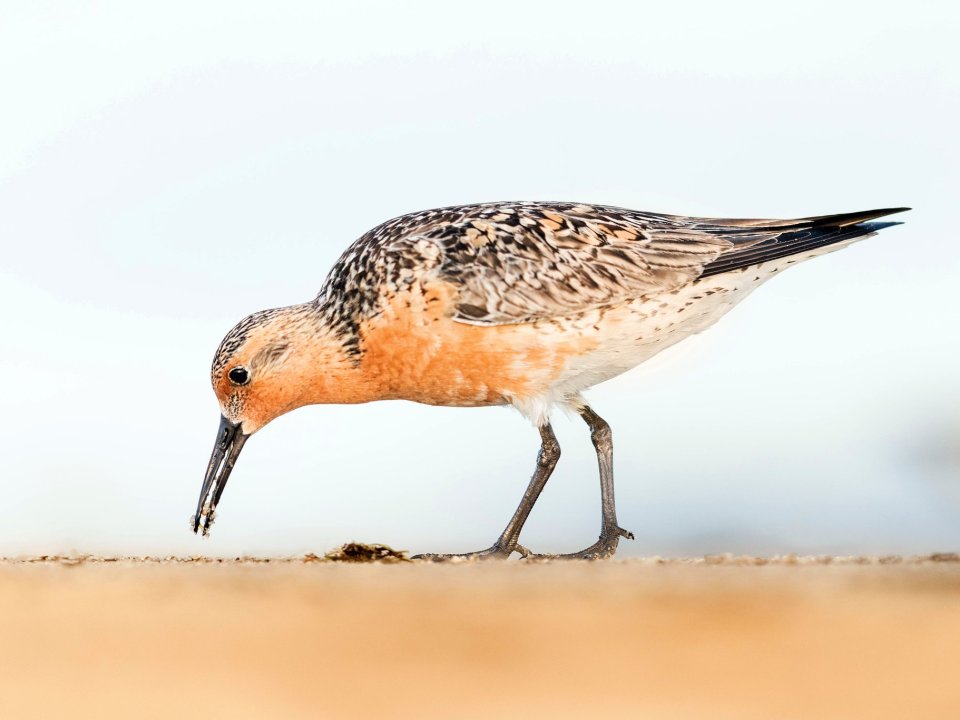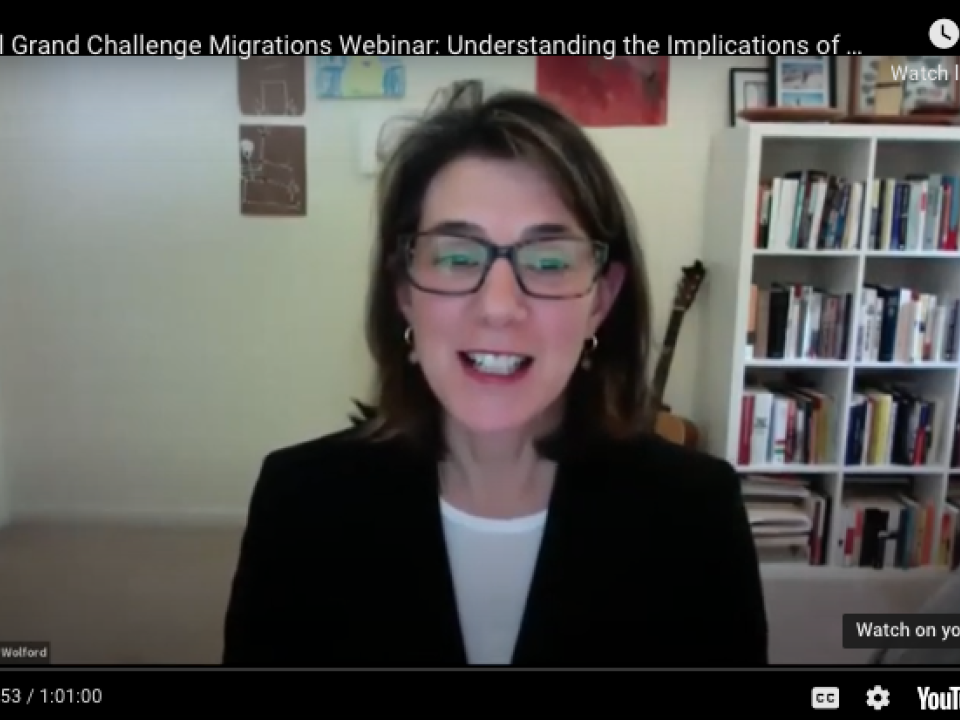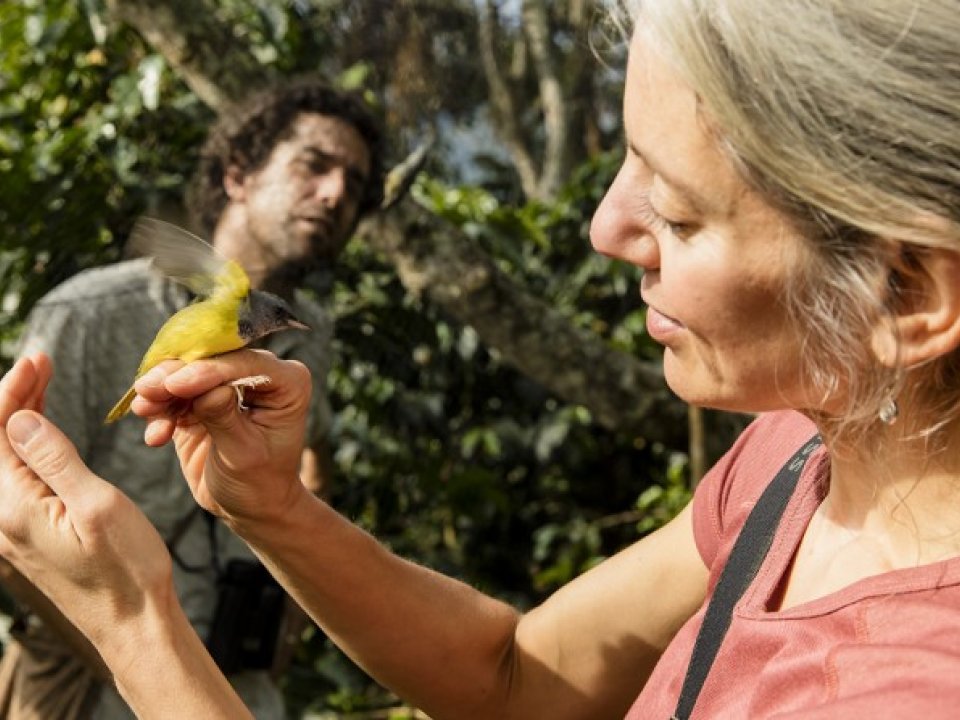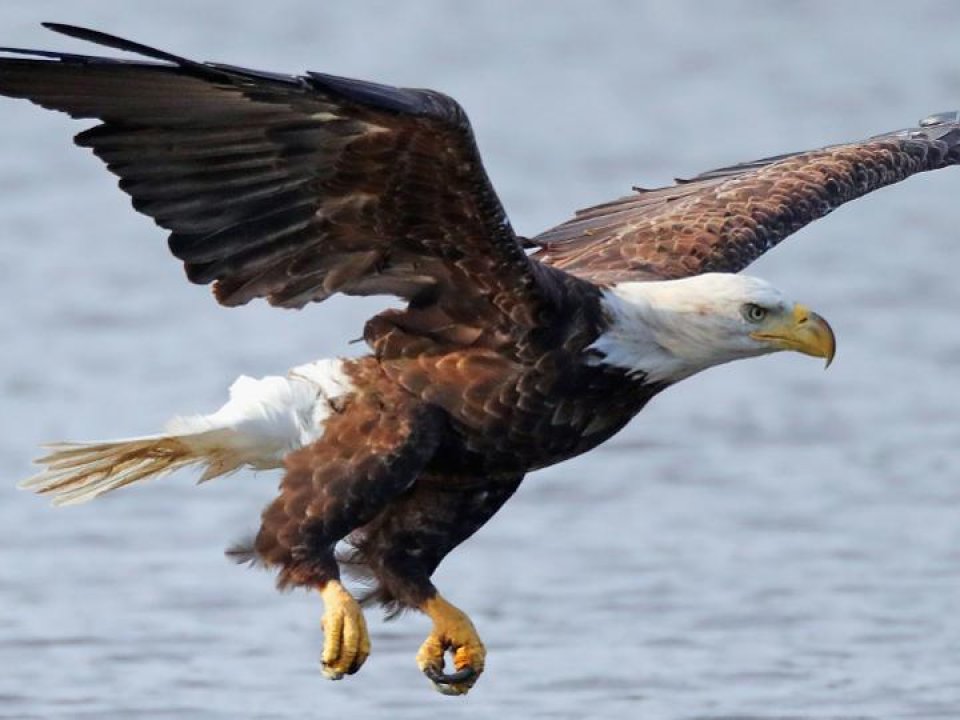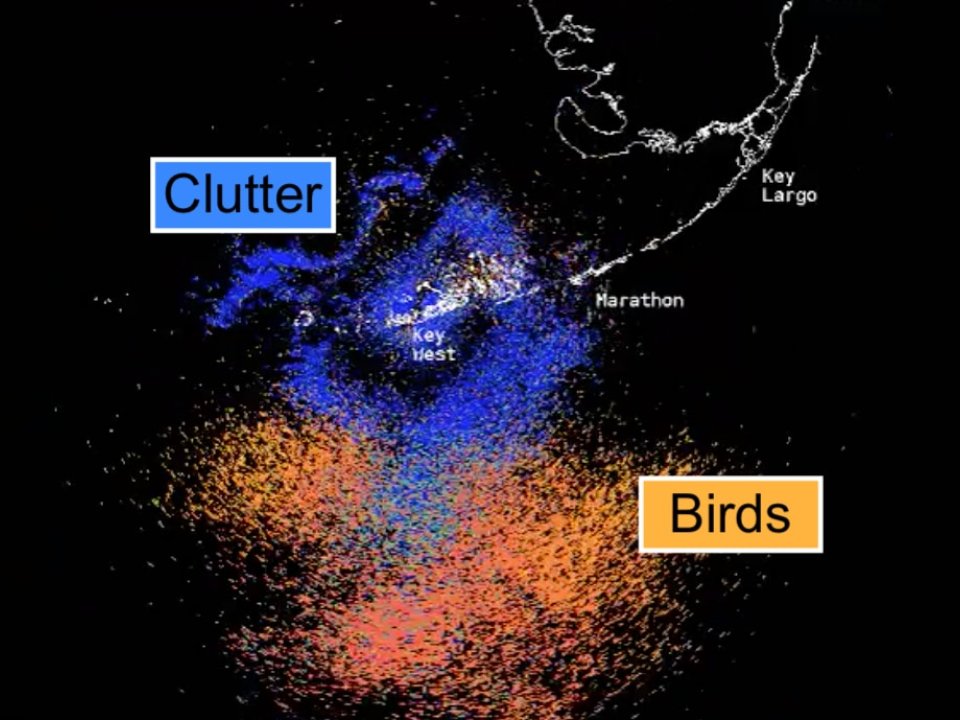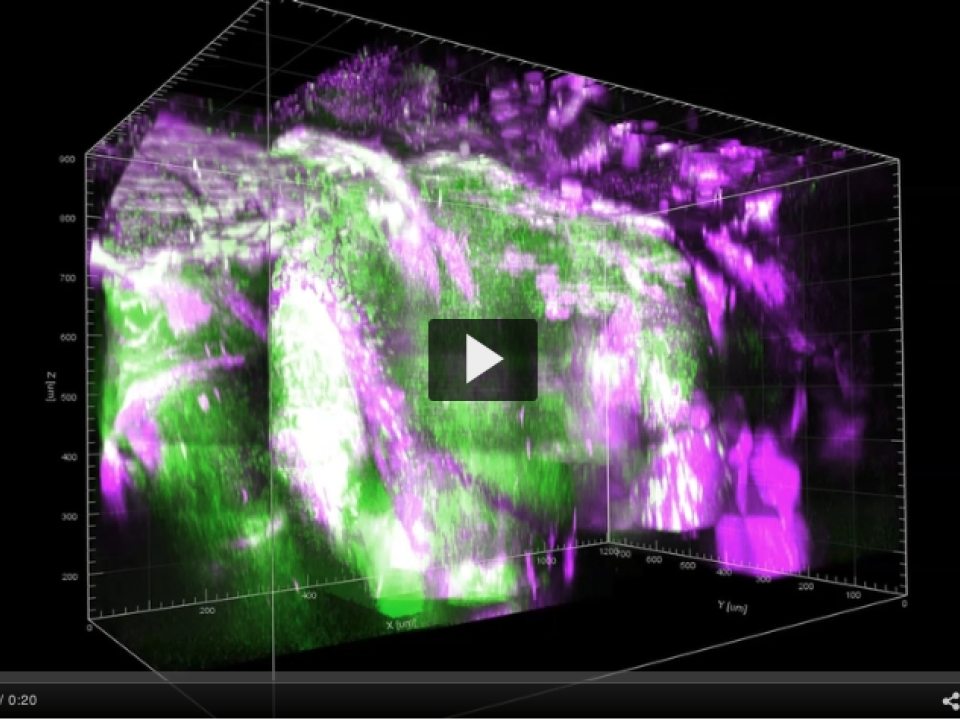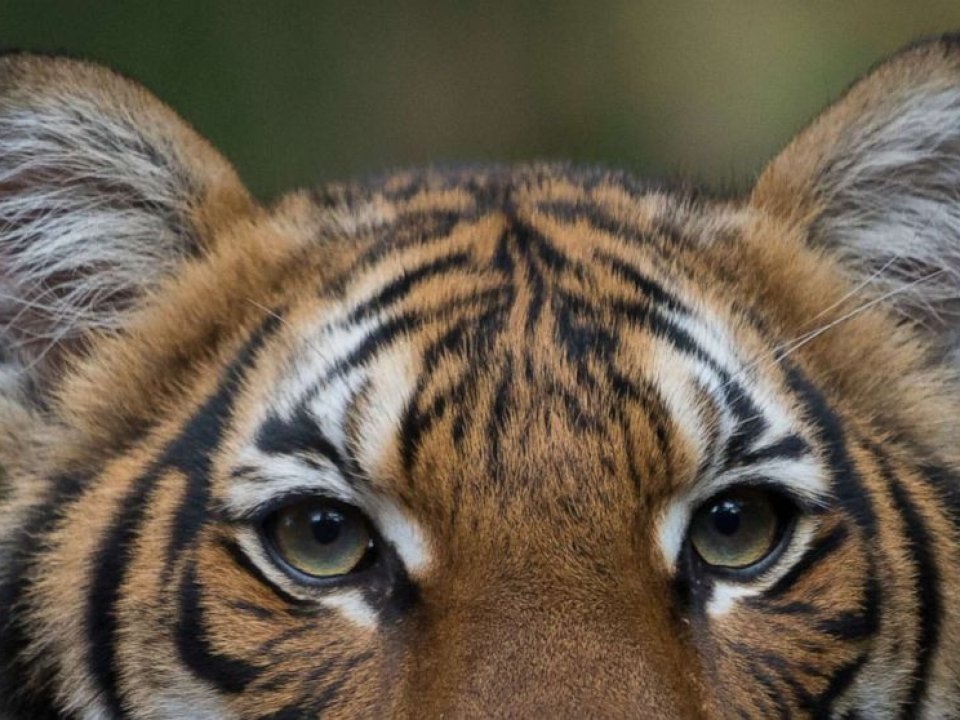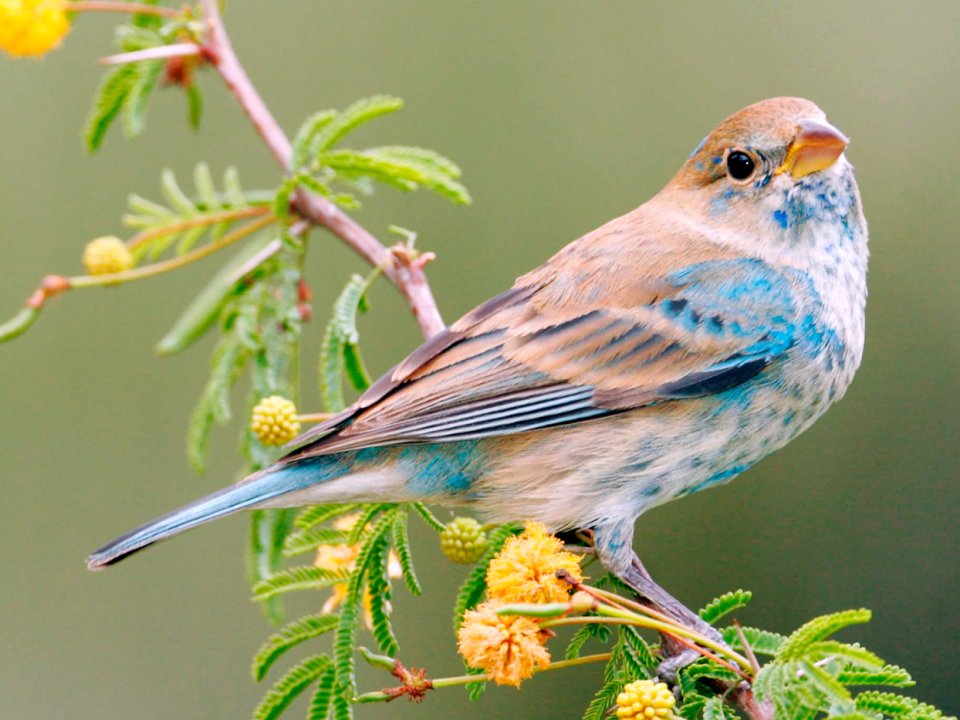News
Karan Odom, postdoctoral associate in the Lab of Ornithology, says that citizen science is “really changing the kind of science we can do and the kinds of questions we can ask.”
“If they can’t find the food, then either they may cut off their migration and they won’t be able to make it up to the breeding grounds, or they make it up there in very poor condition and have a bad breeding season,” says Ken Rosenberg, senior research associate in the Lab of Ornithology.
Our ability to understand migrations and address real-world migration challenges is dramatically improved by working together, as evidenced by this panel's discussion, recorded on June 5, 2020, as part of Cornell's virtual reunion weekend.
Ecologist and conservation biologist Amanda Rodewald studies birds and the ecosystems on which they depend, looking for the best outcomes for people and the planet. This approach turned her attention to coffee farms.
Research by Kenneth Rosenberg, senior research associate in the Lab of Ornithology, finds that North America had a net loss in three billion birds since 1970.
“The coolest thing we’ve learned in the past few years [is that] three to four billion birds migrate over the U.S. each spring and fall, respectively,” says Andrew Farnsworth, research associate in the Lab of Ornithology.
“Because more distantly related species will have much more differentiated genomes, it is more common to find hybrids between sister species or very closely related ones, or at least in the same genus. Inter-genus hybrids occur but are less common,” says Natalia Cristina García, postdoctoral associate in the Lab of Ornithology.
Cornell scientists have developed a new technique for imaging a zebrafish’s brain at all stages of its development, which could have implications for the study of human brain disorders, including autism.
A statement from the Bronx Zoo notes the cooperation and support of the New York State Diagnostic Laboratory at Cornell in detecting the virus in the animals.
"When you buy shade-grown coffee beans, you provide food for more than 70 North American migratory species, like orioles and warblers, that spend winters bulking up on coffee farms across the Caribbean and Central and South America," says Amanda Rodewald, professor of natural resources.

